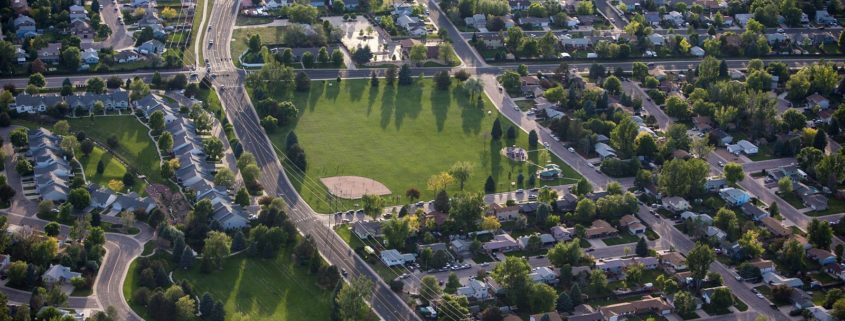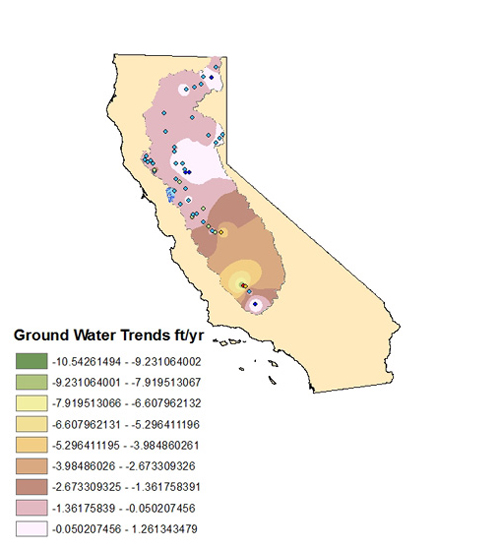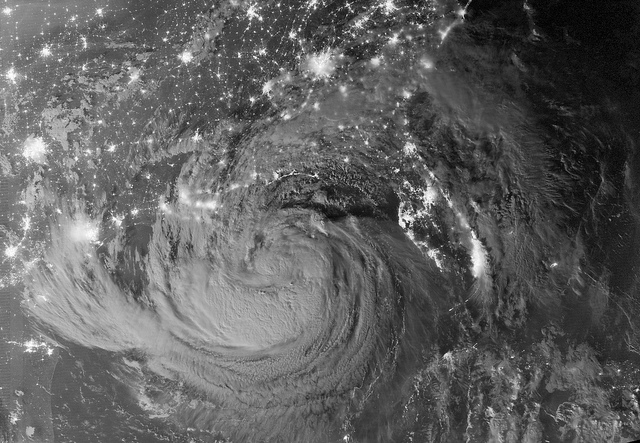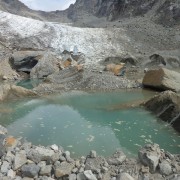U.S. Household Water Use Continues to Decline
Federal report tracks conservation pattern that began two decades ago.
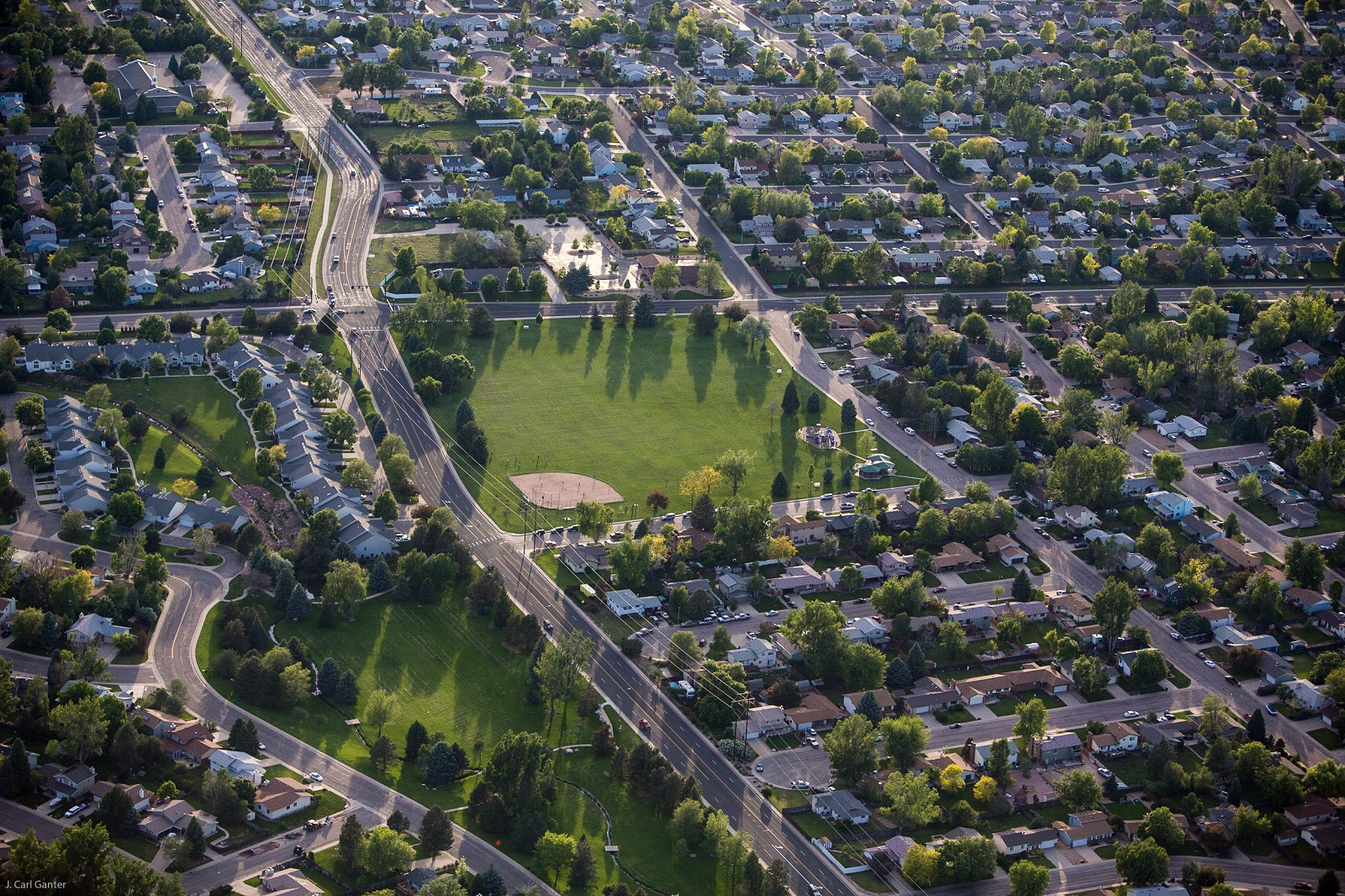
A neighborhood in Weld County, Colorado, one of the few states where household water use is increasing. Photo © J. Carl Ganter / Circle of Blue
By Brett Walton, Circle of Blue
Continuing a trend that began in the early 1990s with tighter federal plumbing standards, U.S. household water use dropped again in 2015.
When assessing national figures, there are two main ways to gauge water use at home: the amount used per person and total water use, which incorporates changes in population. By both measures, water use is declining, according to the latest report from the U.S. Geological Survey, the agency that gathers national data every five years.
For people served by public and private utilities, water use for cooking, drinking, showering, lawn watering, car washing, and other household tasks dropped to an average of 83 gallons per person per day in 2015, down seven percent compared to 2010. Household use was 105 gallons per person per day in 1990.
Total household use declined as well, even as the number of people supplied by utilities increased by 14 million. Household water use in the country dropped by 381 million gallons per day, or two percent. Savings are evident across all utility operations. Total water withdrawals for public supply, a category that includes household use as well as water provided by utilities for commercial and industrial purposes, are the lowest since 1995.
Three factors explain the decline, according to Molly Maupin, a U.S. Geological Survey hydrologist who helped to collect the water-use data. A severe drought in California prompted Gov. Jerry Brown in 2015 to order urban water utilities to cut demand by 25 percent. Those utilities are also implementing a state water conservation law that was passed in 2009. California, not surprisingly, showed the largest decline in total household water use in the country between 2010 and 2015.
Second is that water utilities are paying more attention — by fixing leaks and installing meters. The Georgia Legislature, for instance, passed a law in 2010 that requires utilities to conduct an annual audit to check for leaks.
“People are continuing to use water more carefully,” Maupin told Circle of Blue.
Conservation yields financial benefits for residents, too. A study published earlier this year by the Alliance for Water Efficiency, a Chicago-based nonprofit, found that using less water in two Arizona cities led to cheaper rates than if new water supply projects were built in order to keep pace with higher demand.
The third factor is water-saving plumbing fixtures. The federal Energy Policy Act of 1992 dramatically strengthened the plumbing code, requiring toilets, showerheads, faucets, dishwashers, and clothes washers to cut down the flow of water. As a result of the act, toilets flush half as much water as before and showerheads spray 30 percent less.
Research bears this out. Nearly all the decline in residential indoor water use in the last two decades is due to more-efficient fixtures, according to a 2016 study funded by the Water Research Foundation. That study examined in detail the behavior of households in nine large cities.
Some states have turned the screws even tighter. California ordered that toilets sold after January 1, 2014, flush 20 percent less water than the federal standard of 1.6 gallons. Texas, Georgia, and Colorado followed with similar laws.
Water use is not declining in every state, though. According to the USGS report, which uses data from state agencies and water utilities, per person water use increased in the states of Alaska, Colorado, Idaho, Louisiana, Utah, Virginia, Wisconsin, and Wyoming.
Most of these states are in the American West, and three are in the upper basin of the Colorado River, where there is strong debate about whether to increase water withdrawals from the shrinking river.
Brett writes about agriculture, energy, infrastructure, and the politics and economics of water in the United States. He also writes the Federal Water Tap, Circle of Blue’s weekly digest of U.S. government water news. He is the winner of two Society of Environmental Journalists reporting awards, one of the top honors in American environmental journalism: first place for explanatory reporting for a series on septic system pollution in the United States(2016) and third place for beat reporting in a small market (2014). He received the Sierra Club’s Distinguished Service Award in 2018. Brett lives in Seattle, where he hikes the mountains and bakes pies. Contact Brett Walton

